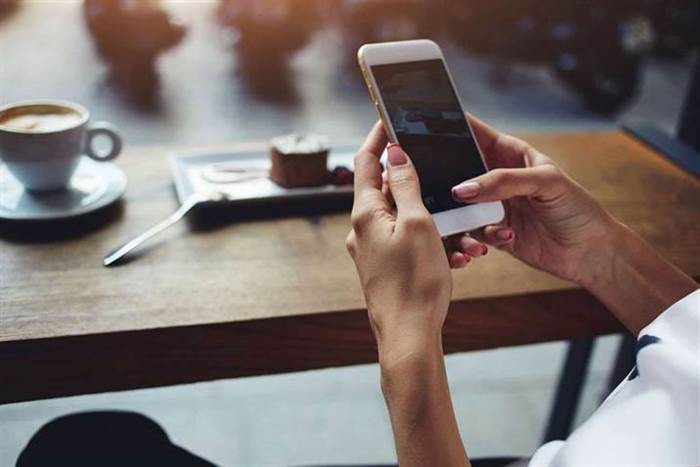Содержание
It relies on several different types of technologies and there is no clear standard technology for indoor navigation apps. Many navigation apps today stop at the door, right when getting around can become even more challenging for people who are blind or have low vision. Right now, proximity-based indoor navigation systems are the most user-friendly and cost-effective indoor navigation technologies. The most commonly used proximity-based systems are tags and beacons. Indoor navigation is mainly used in big spaces, like hospitals, malls, and airports.
But soon, getting lost indoors may become just as rare as getting lost outdoors. Indoor navigation systems – think Google Maps for malls, airports, hospitals and other large buildings – are on the rise, and they aim to remake our sense of space as thoroughly as GPS already has. In hospitals, indoor navigation systems can be used to show facility maps to visitors. But indoor navigation systems also provide benefits to building owners, operators, and businesses. For example, they can offer new revenue streams for businesses and improve the management of a building. This is the most commonly used technology in the navigation space, however, it fails to provide accurate navigation or positioning inside a building.

The target area or site can be any environment rich in Wi-Fi access points and/or Bluetooth Low Energy beacons such as iBeacons. In office or residential buildings with dozens of access points, the signals and their strengths will vary widely in different areas. Whether this vision — or that of other accessible navigation app developers — come to fruition depends on how many people hit download. This can help blind people better pinpoint bus stations or subway station entrances, while also allowing them to get accurate location information in situations where a GPS signal is unreliable, like underground or in towering urban jungles. The information is also offered in up to 34 different languages — making it a potential tool for travelers who may not speak the local language. Simply hearing directions from an app like “in 500 feet turn right,” often isn’t enough information to guarantee independence and safety.
If needed, one can even create a hard-coded route and customized features, like voice recognition. For the development of an AR-based IPS app, one needs to go with Apple’s AR Kit or Google’s ARCore software development kits as per project requirements. Project Tango can work with an “Area Definition File”, meaning a reference scan . What happens if tango keeps indexes of relevant feature of an image and its position in the ADF.
But first, let’s understand the usefulness of the indoor navigation system. Other companies are developing what McKinlay describes as “hybrid systems,” which use various methods consecutively or at once. The Finnish company IndoorAtlas uses geomagnetic technology, taking advantage of the metal in buildings’ construction materials and phones’ built-in magnetic compasses to pinpoint and track users. Magnetic positioning is the most cost-effective technology because it’s extremely accurate without requiring any hardware. But it will still take a bit of time for magnetic positioning to become the standard indoor navigation system. Mobile Updates, as the indoor navigation apps need them to refrain from any issues.
Today, you learn how indoor spaces can be effectively navigated with how to build a gps apps. You also get real-life use cases and understand how indoor navigation technology works. With indoor navigation apps, a user sees a map of the space that the user wants to navigate. The user can then use this map in real-time to find a specific destination.
Advantages Of Indoor Navigation Software Applications Are:
Ultra Wide-Band systems use bursts from ultra wide-band readers to locate users. Acoustic systems work like UWB systems but they use sound instead of radio signals. They work with the help of small beacons that are installed in a building. These beacons transmit a https://globalcloudteam.com/ continuous radio signal that is detected by smartphones. Tags, a reader-based system, work as WiFi transmitters and they send simple packers to WiFi access points in the building. A user’s location can be determined based on the time and strength of that reading.
Above we have covered all the crucial aspects of indoor navigation mobile apps and how they can be created for best use by the businesses and providing many benefits to the users. Hence, if you are looking to create such an app, simply get in touch with an indoor navigation app development company to fetch desired results. As it comes to Indoor Navigation, Beacon is yet another popular technology that is often used. An example of this is the use of 2000 battery-powered Bluetooth Low Energy beacons installed at the Gatwick airport, United States, giving +/-3m accuracy. Distance value and thus one can’t rely on signal strength as they try manually calculating this data. However, beacons can do a nice job same as other current indoor positioning technologies available in the market which are beacon-based and using AR only for route visualization.

This is where the software firm can clarify their project requirements and the business needs of the clients, brainstorm the most efficient options and accordingly come up with a technical strategy. Here, the business analysts & project managers work together with the product owners & stakeholders for creating a consistent overall vision of the AR app, while keeping in mind all the project constraints . Also, the Technical Analysts provide an overview of available development tools, hence it is easier to decide on the technology stack. Often it happens that the app development confuses the users, in terms of how that particular app can be used. However, this new era of technology has added value to applications and provides better services.
However, it would be better to leverage ARKit & ARCore SDKs’ functionalities for solving the issue of user positioning. Hesper Smyth, a lead designer at wayfinding design firm Corbin Design, points out that designers working on physical wayfinding must follow guidelines set out by the Americans with Disabilities Act. That means letters on signs must be a certain size, signs must be mounted at a specific height from the ground, letters and pictograms must contrast with their background and so on. Designers also take into account populations with specific needs, such as the elderly or those who don’t speak English, Smyth says. The elderly, a population especially vulnerable to getting lost, may not have the technological wherewithal to use indoor navigation apps. Most indoor navigation apps work with a map like the one you would use when navigating outdoors.
The Rise Of Indoor Navigation
For a long time it seems we just accepted the fact there was no indoor navigation solution, but – as always – things are changing J. Once these technologies are widely available, how useful will they be for the average person? David Vanden-Eynden, the co-founder of Calori & Vanden-Eynden, a design firm that specializes in wayfinding signage and design, says getting lost is actually not a problem for most people in most buildings.
This data is then used to locate people inside a building with an accuracy of 1-2 meters. Indoor navigation can be used to improve airport visitors’ experience. For example, an indoor navigation app can be used to show the trip schedule, navigate check-in desks, gates, shops, and restaurants, and keep waiting times down.
When the GPS fades out, such as when a user goes deep into a subway station, the other sensors take over. Mobile apps on Android and iOS are compiled with Navizon SDK. Apps on other OS may use the API. Apps take a snapshot of current ambient signals, and obtain their location either server-side by querying Navizon’s server or client-side through the SDK, which uses data from the device’s sensors. The SDK can deliver sub-meter accuracy, while the API delivers accuracies between 2-3 meters/6-10 feet.
- It shows the users standing positions on the maps and it directs them to the shortest path so they can quickly reach their destination.
- (The company’s app listing says they plan to expand in the coming months if they generate enough funding.) It was originally designed to assist blind people, but could have mainstream appeal.
- Another app, called NaviLens, uses colorful QR codes with large boxes that can be scanned by a smartphone from up to 40 or 65 feet away, depending on the size of the QR code sign.
- Designers also take into account populations with specific needs, such as the elderly or those who don’t speak English, Smyth says.
- The SDK can deliver sub-meter accuracy, while the API delivers accuracies between 2-3 meters/6-10 feet.
That’s why this solution is more expensive and less power-efficient. Indoor navigation is based on different technologies, such as Bluetooth beacons, WiFi, and infrared systems. These systems use a variety of different technologies, from WiFi to radio waves to magnetic fields. One potential problem is that anyone can change these maps and put in incorrect information, and OpenStreetMap relies on other contributors and volunteers to catch inaccuracies and correct them. Other apps using crowdsourced information, such as MapInHood, would have to contend with the same issue.
What Is Indoor Navigation?
They all have pros and cons, but beacons are currently the best technology. That said, new and more effective technologies, primarily magnetic positioning, are being developed. The technology that powers GPS, which is the most commonly used outdoor navigation technology, doesn’t work indoors. That’s because GPS is based on satellite signals and these will easily get blocked out by walls or ceilings. Indoor positioning system, Anyplace Indoor Service, indoo.rs – Navigation, Navin, Mapwize are some of the mobile apps and software that are built for navigating indoors. Many companies built solutions to get the best possible estimation given those constraints.

Roland Allen, a cane travel instructor at the Louisiana Center for the Blind, has downloaded a few of them, but doesn’t believe that they will ever fully replace his cane. He’s wary of solely relying on phone technology, which is expensive, can come with glitches, and could leave someone stranded if their battery dies. Many of these apps are based on existing, open-source mapping data, such as OpenStreetMap, a free, editable map of the world created by thousands of volunteers. Other technologies include Ultra Wide-Band systems, acoustic systems, and infrared systems.
Airports
That’s why the user experience can be vastly improved with an effective indoor navigation tool. In terms of users, the apps allow them to easily search the best and shortest possible routes inside the building in real-time as the technology allows easy navigation. With the help of apps, the entire search procedure gets easier as it consists of an option of Voice destination and allows them to create and find the shortest & easiest routes. And this is the main reason behind the making of these newly trending indoor mobile apps. These three main elements help to combine and collect the data from different resources and calculate the exact user position. Hence, mainly for the indoor navigation app to work well, it needs a unique set of functionalities that we will discuss ahead.
Developing A Healthcare Mobile App
But there are still cases causing issues, especially where you don’t have a reference scan, I’ve noticed mirrors and elevators are a big problem. I’ve had the chance to try a new breakthrough technology called “Project Tango”. But it’s not yet clear whether those most in need of wayfinding help will be served by new technologies. Mall visitors can easily get information about stores and services and navigate and locate themselves. Often it happens that the offices look just the same in different places, like the rooms and the corridors might be identical on different floors and this is why it not possible to always succeed in visually determining the location.
Mobile App Location
I actually tried one from Cisco where you had to input the building layout in addition to the different materials around. A glass wall has a different effect of the signal propagation that wood. With a good mesh of transmitters, you could get a pretty good solution, but that had a certain cost small businesses may think twice about buying, not mentioning the setup time and effort. Building owners control access to the map, but assuming it is available, anyone can use it, pointing their phone around the space. The app will then compare the image on the phone with the image in the cloud, telling users where they are, giving them directions or announcing out loud what is around them. When businesses utilize this service in the best possible manner by putting it for good use and adding great convenience to users, they can tremendously benefit from this service.
Usefulness Of Indoor Positioning & Navigation Apps For Users
As our device got more wireless chips for short range (wifi/bluetooth), that opened up to new possibilities. We could map the signals strength for a given location, and the next time we had a similar pattern we would have an estimation of where we are. If you are curious take an Android device and use this app, you will see for yourself. Most purpose-built buildings, like malls and airports, are quite linear and straightforward, Vanden-Eynden says, so it’s rare to need much navigation help beyond the existing signage. Exceptions include big department stores, which are confusing by design, so shoppers will spend more time there.
Market Statistics For Indoor Positioning Apps
Our positioning algorithm measures the Bluetooth signal’s strength with Bluetooth low energy beacons to locate and navigate a user. That information is then fed into an application to make it useful for wayfinding. This is why the actual technology isn’t the only concern you should have when you choose an indoor navigation system. The software that powers your indoor navigation is another key consideration. Store owners and mall operators get tools to engage customers and visitors and customer behavior data.
Hence, for the indoors, you need special indoor navigation and positioning apps that are different from the outdoor navigation apps. The thing is the GPS outdoor navigation apps use GPS satellite signals and they usually lose signal when in crowded places or inside large complexes or buildings. Whereas, these indoor positioning apps are specifically created for smaller areas where they work with augmented reality displaying your location just by simply accessing integrated GPS maps. When the user accesses the inbuilt GPS maps available in the apps, they offer the shortest possible routes towards your destination. But WiFi requires active connection, and installing beacons can be expensive and time-consuming, so tech companies are exploring other methods as well. Earlier this year, Google announced it was working on an indoor positioning technology called VPS that works with its Tango augmented reality system, which mapped indoor spaces using a depth-sensing camera built into its phones.
The app’s selling point is that it doesn’t rely on beacons or anything else that needs installation. But it does rely on other people having already gone where you need to go. These indoor positioning apps are helpful and reliable as it comes to shopping complexes, airports, malls, railway stations covering larger surface areas. Also, this kind of advanced technology can even be leveraged by offices, hospitals, colleges, and warehouses, as it makes it easier for the users to find destinations with the shortest possible routes without any hassles. Same as the outdoor GPS Navigation apps, the indoor navigation apps allow users to find an exact location within large commercial spaces.
Like the interiors might change and this confuses the ARWorldMap and the complex calculations also make the solution pretty slow. So if we are able to determine how we move keeping track of what the camera sees, we can know were we are compared to when we first started to keep track of the movements. There will be a planned 8-hour downtime on Sunday, August 14 starting at 10 am CEST; 4 am EDT until 6 pm CEST; 12 pm EDT. During this time, Answers and blogs will function but subscription-related features, such as following a tag, will not function. Nearly every blind person has at least one story of getting lost or disoriented.
It accurately works in large/low-rise buildings, such as airports, but fails to determine finer details, like floor number, and the only way to know that is doing it manually, just as one does in Google and Apple Maps. It is actually a device manufactured with a completely new technology. Its goal is not exactly to solve indoor navigation but that’s one of its possible uses. It sends IR light in all directions and detects the way it bounces off via a fisheye camera. It’s built in with algorithms that combines accelerometer/gyroscope data and differentiating characteristics of the image caught by the fisheye camera, along with calculated depth data points. British company Focal Point Positioning offers technology that boosts weak indoor GPS signals, combined with a navigation system that uses a phone’s various built-in sensors.


